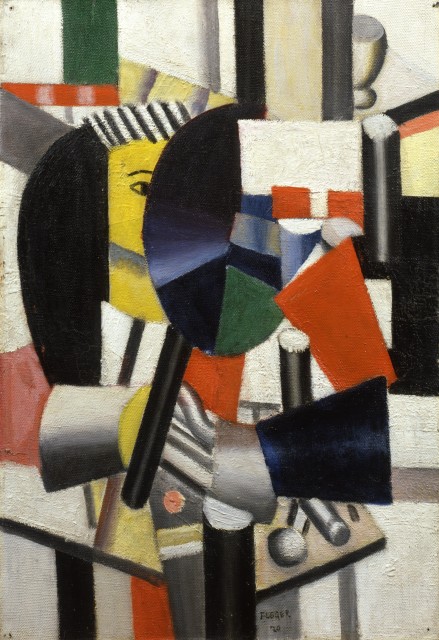During the past few years, the gallery decided to explore successively, through a wealth of retrospective exhibitions, the seductive dream worlds of several surrealist artists (Tanguy, Ernst, Matta) ; a visual adventure at the very core of several Great Surrealists was then put on. This season, anxious to present a more frequent series of exhibitions, the gallery Malingue is happy to showcase a group of paintings by Fernand Léger, himself a tireless explorer and leader of the French art scene for nearly a half century.
A group of major paintings will illustrate some of the most striking steps in Léger’s rich output : his “mechanical” period, looking at figures and disarticulated objects with a wonderfully visual pleasure (Les Cylindres colorés, 1918, Dans l'Usine, 1918), then comes the period of his “large figures”, during which he re-introduced the human figure as a visual object, made up of powerful volumes (La Femme au miroir, 1920, Le Grand Déjeuner, 1921, the masterpiece of that period). Later on, the object once more takes up a masterful position in Léger’s works, “arranged” in an invisible order within still-lives (Nature morte, 1927), then linked in space with other elements…figures, clouds…(Danseuse aux clefs, 1929). After that the painter combined hieratic figures with their fine robustness to more or less identifiable “visual objects” (Composition aux trois figures, 1932, Marie l'Acrobate, 1934). Papillon et fleur, 1937, unites and opposes, with a fine poetical genius, unexpected forms and colours, whereas the Composition (Bois polychromes) of 1944, is an illustration of one of the series painted by Léger during his exile in the USA, here inspired by agricultural machines abandoned in vast empty spaces.
Deeply grounded in a modern world that he found exalting, Léger drew his inspiration directly from it to become one of the greatest visual innovators of his time, creator of a vivifying and optimistic body of work. The visitors will be able to savour with what brio this “modern times primitive” managed to always maintain a seductive balance between the real and the imagined, with what talent he knew how to show the unusual beauty of modern life.
